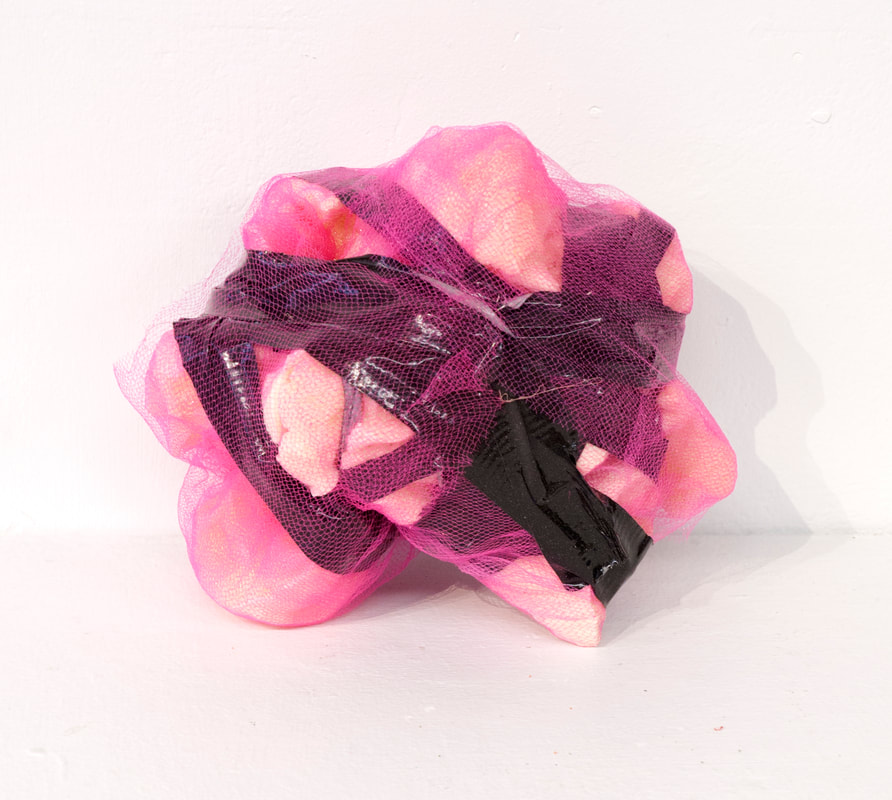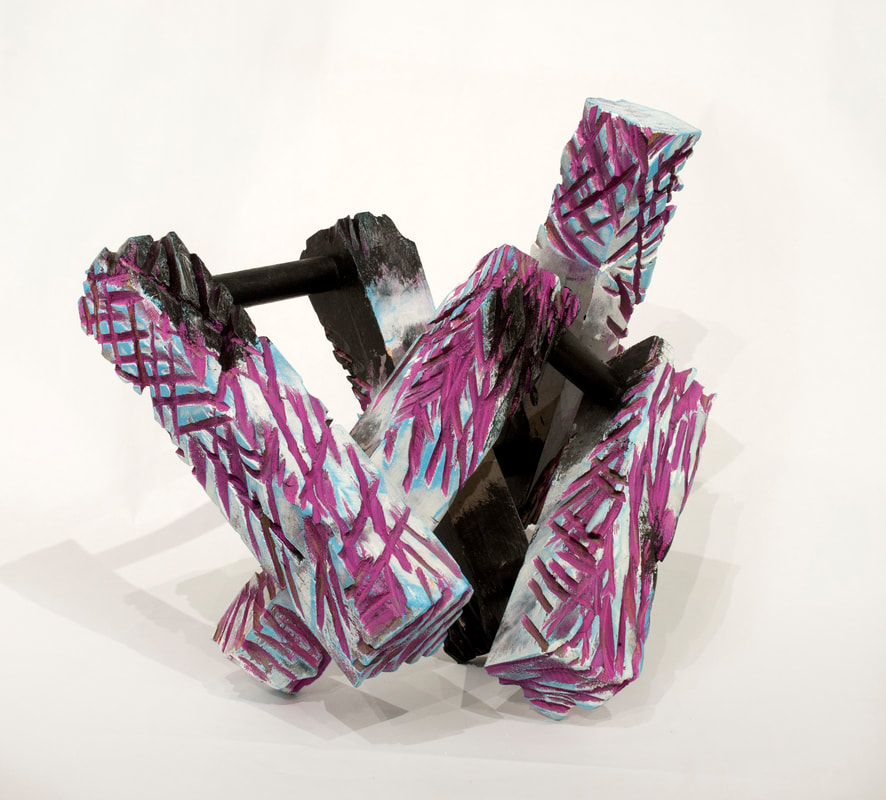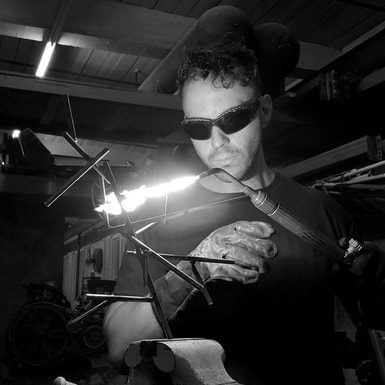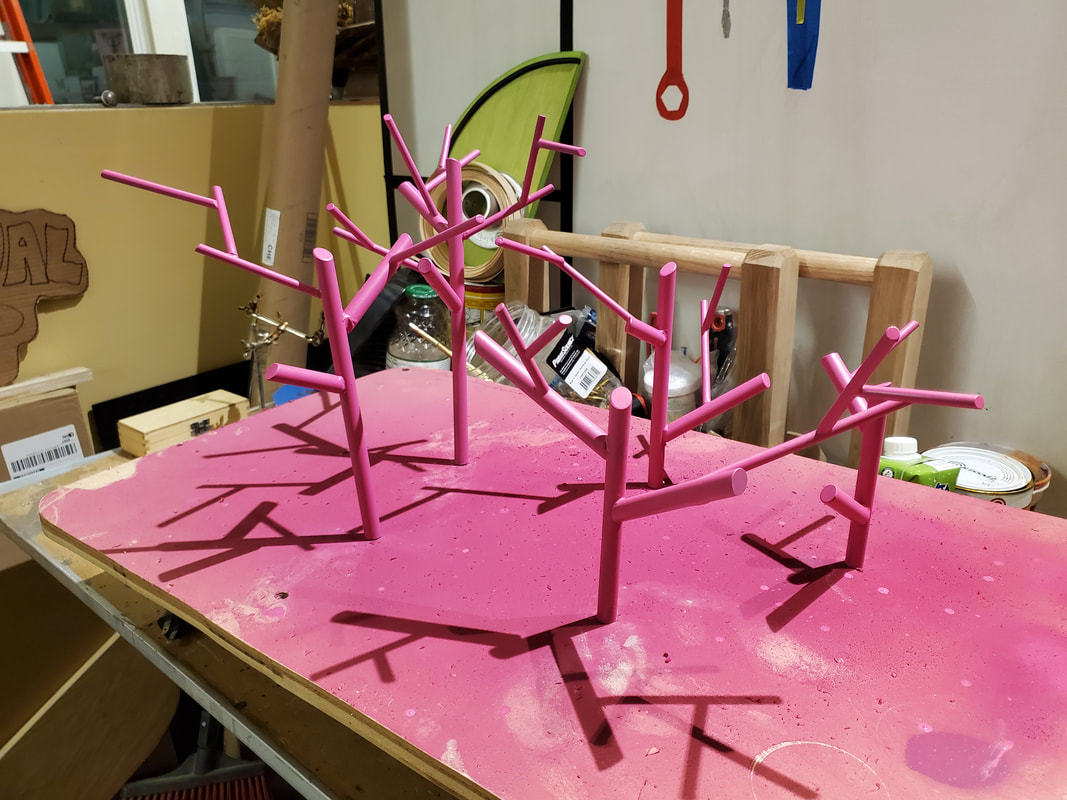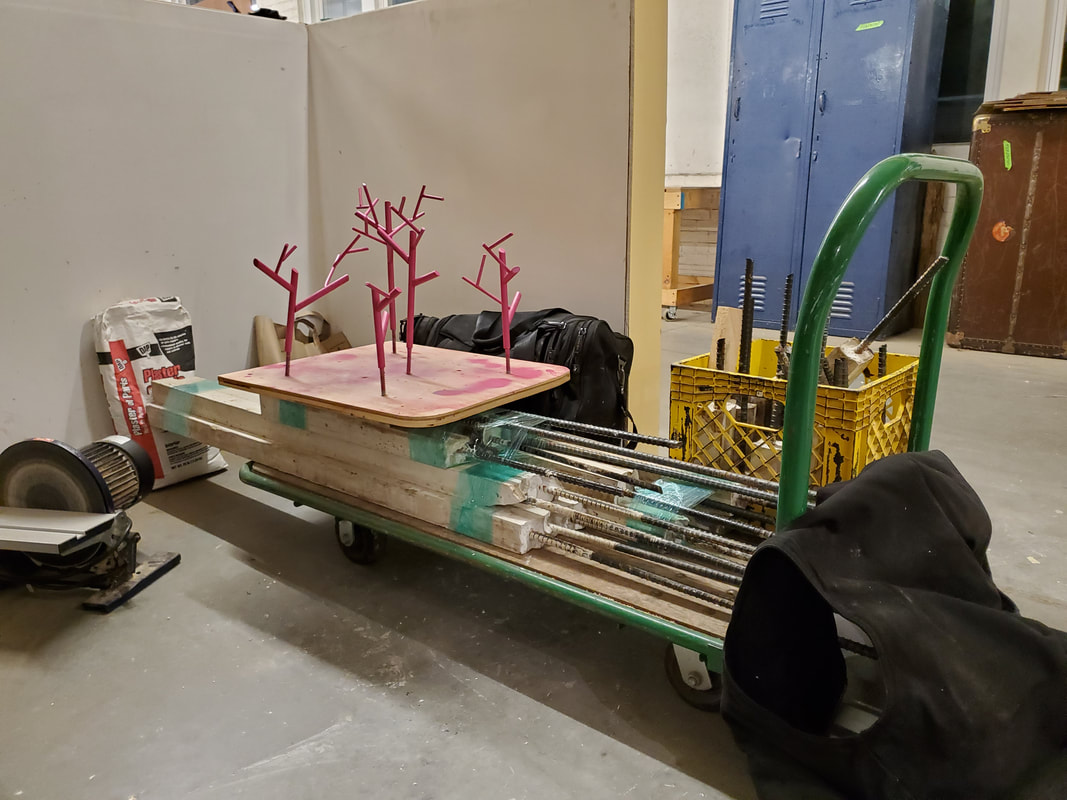Hillel O'Leary is an artist and educator whose sculpture and installation have been featured internationally, and within the US. Hillel's work deals in uncovering identity through the deft manipulation of material and meaning, providing space to navigate both border and boundary. Hillel is currently a professor at the Rhode Island School of Design
Published on May 25th, 2021. Artist responses collected in months previous.
What hurdles have you overcome this year and how have they affected your art practice?
I'm currently working on a site-specific installation for a sculpture show at Kennard Park in Newton, MA. I've also been experimenting with some new forms and materials for some other personal work. I've also been writing some more, and I'm looking to integrate my writing and visual art in to some kind of publication. In addition, I've been working on a number of more public collaborative community-based projects that center on storytelling and virtual communities. My biggest hurdles this year has been navigating some personal demons, and trying to get a better sense of the right choices I can make in order to have a more fulfilling and meaningful life. It's been a struggle to continue to make work while investing such a large amount of time to self growth, but ultimately, I think my work is going to come into an even clearer focus now that I have put in the work of getting to know myself a little better.
How has your art practice been affected by the pandemic?
The pandemic has certainly made things more challenging in my regular professional life, in my teaching, and in my own work. From having shows and calls cancelled, to trying to pivot to making new kinds of work, to branching out into pursuing funding opportunities to create more digital and more community-driven projects, it has been an invigorating if not difficult challenge. I think that so much of what I do rests on an ability to build something physical, or to have someone experience something in person, and my modes of making have been very challenged as a result. I've turned to exploring these expanded options for output, while also allowing myself to experiment more in studio for the time when things do open again, and we can go see art in person. I think that it would be great to have a full show's worth of work ready to go when a vaccine shows up.
What support systems have you put in place to help keep your practice thriving amidst these unforeseeable circumstances?
I've been spending more time speaking to friends, experimenting with different media, trying to collaborate and problem-solve in larger groups. I'm thankful that I have a network of artist friends who can relate and provide feedback or insight about the issues that many of us are facing right now. These trusted friends and colleagues have helped to empathize, share stories, share ideas, and admit when they don't know something, and I have done my best to do the same for them. Having a community studio to go to, that has remained open, that has kept up with social distancing practices, has been absolutely critical for my sanity, and the wellbeing of my art practice. Additionally, the expansion of Covid-related grants and funding opportunities have helped to direct my energies toward an application process that I hope will bear fruit in the near future. It's really been about trying to be as versatile as possible.
What methods do you employ to stay resilient in your art practice? What tips would you recommend to other artists who find staying resilient difficult?
The biggest thing thus far has been to try to be kind to myself, and to listen to my body. I know that's pretty basic, but I think we all forget sometimes. I know I do. Sometimes the best thing to do is to stop focusing on the culture of capitalism and productivity that push and pull you in all kinds of directions, and further away from yourself. I've tried to change my expectations, my progress goals, and my amount of time in studio in order to compensate for the additional slack I know I need in my life. I have also been trying to ask for more help from friends, fellow artists, colleagues. I've been trying to find reasons to collaborate, communicate, and engage with other people. I think it's critically important to keep a balance between looking inside yourself, and looking outward to see who is there for you, and who you can support, too.
What have you learned about yourself as an artist this year?
So far I've learned that the things I make work about are painful, and I'm not sure that's always sustainable. I know that there are many of us who believe that we might not be who we are as creators if we felt good, or if we made work about happy things. I think there is an important commonality in the output of creative people that i respect, and that is honesty, and telling the real story of where you are, or when you are. For some people a fundamental way of being can change, and it is important to embrace that change so that you don't get stuck in a place you don't belong anymore. I'm not sure what that looks like for me, yet, but I'm going to be more finely attuned to what my narratives are saying about where I am currently, and where I need to be going.
What hurdles have you overcome this year and how have they affected your art practice?
I'm currently working on a site-specific installation for a sculpture show at Kennard Park in Newton, MA. I've also been experimenting with some new forms and materials for some other personal work. I've also been writing some more, and I'm looking to integrate my writing and visual art in to some kind of publication. In addition, I've been working on a number of more public collaborative community-based projects that center on storytelling and virtual communities. My biggest hurdles this year has been navigating some personal demons, and trying to get a better sense of the right choices I can make in order to have a more fulfilling and meaningful life. It's been a struggle to continue to make work while investing such a large amount of time to self growth, but ultimately, I think my work is going to come into an even clearer focus now that I have put in the work of getting to know myself a little better.
How has your art practice been affected by the pandemic?
The pandemic has certainly made things more challenging in my regular professional life, in my teaching, and in my own work. From having shows and calls cancelled, to trying to pivot to making new kinds of work, to branching out into pursuing funding opportunities to create more digital and more community-driven projects, it has been an invigorating if not difficult challenge. I think that so much of what I do rests on an ability to build something physical, or to have someone experience something in person, and my modes of making have been very challenged as a result. I've turned to exploring these expanded options for output, while also allowing myself to experiment more in studio for the time when things do open again, and we can go see art in person. I think that it would be great to have a full show's worth of work ready to go when a vaccine shows up.
What support systems have you put in place to help keep your practice thriving amidst these unforeseeable circumstances?
I've been spending more time speaking to friends, experimenting with different media, trying to collaborate and problem-solve in larger groups. I'm thankful that I have a network of artist friends who can relate and provide feedback or insight about the issues that many of us are facing right now. These trusted friends and colleagues have helped to empathize, share stories, share ideas, and admit when they don't know something, and I have done my best to do the same for them. Having a community studio to go to, that has remained open, that has kept up with social distancing practices, has been absolutely critical for my sanity, and the wellbeing of my art practice. Additionally, the expansion of Covid-related grants and funding opportunities have helped to direct my energies toward an application process that I hope will bear fruit in the near future. It's really been about trying to be as versatile as possible.
What methods do you employ to stay resilient in your art practice? What tips would you recommend to other artists who find staying resilient difficult?
The biggest thing thus far has been to try to be kind to myself, and to listen to my body. I know that's pretty basic, but I think we all forget sometimes. I know I do. Sometimes the best thing to do is to stop focusing on the culture of capitalism and productivity that push and pull you in all kinds of directions, and further away from yourself. I've tried to change my expectations, my progress goals, and my amount of time in studio in order to compensate for the additional slack I know I need in my life. I have also been trying to ask for more help from friends, fellow artists, colleagues. I've been trying to find reasons to collaborate, communicate, and engage with other people. I think it's critically important to keep a balance between looking inside yourself, and looking outward to see who is there for you, and who you can support, too.
What have you learned about yourself as an artist this year?
So far I've learned that the things I make work about are painful, and I'm not sure that's always sustainable. I know that there are many of us who believe that we might not be who we are as creators if we felt good, or if we made work about happy things. I think there is an important commonality in the output of creative people that i respect, and that is honesty, and telling the real story of where you are, or when you are. For some people a fundamental way of being can change, and it is important to embrace that change so that you don't get stuck in a place you don't belong anymore. I'm not sure what that looks like for me, yet, but I'm going to be more finely attuned to what my narratives are saying about where I am currently, and where I need to be going.
Find Hillel O'Leary on Instagram

